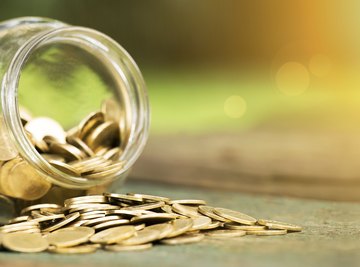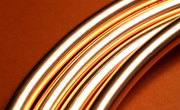
An alloy is a metal created by combining two or more metallic elements. Different types of alloys are made for greater strength of the material or for resistance to corrosion. This durability makes alloys the basis of building in the modern world.
Types of Alloys: Chemistry and the Formation of Alloys
An alloy is a stable metallic substance consisting of two or more metals. In some instances, an alloy may also contain non-metals. To find metals on the periodic table, look at the ladder created from boron to astatine. Elements to the left of that ladder are considered metals; to the right, non-metals.
Traditionally, the main ingredient of the alloy is melted first, followed by dissolving the other ingredients into the molten mixture. The elements fuse, forming a substance that takes on properties of both.
One difficulty in making alloys is that metals have different melting points. For example, copper melts at 1,083 degrees Celsius and zinc at 419 degrees Celsius. However, zinc also boils at 907 degrees Celsius. Therefore, to avoid the vaporization of zinc, brass is made by melting the copper first, then adding zinc so it will quickly dissolve.
Types of Alloys: Chemistry and Lattice Structure
The strength of a metal is how much force the layers of atoms can tolerate before moving past each other. Alloys are stronger due to the distortion in the metal’s lattice structure.
In steel, the smaller carbon atoms fit in between the iron atoms to create the stronger steel alloy. In the distorted lattice structure, atoms cannot move over/across each other as easily, making the alloy more resistant to higher forces.
Different Types of Alloys
Several different types of alloys, the elements that comprise them and some of their uses are listed below:
Aluminum Alloys
Aluminum is not a very strong metal but its conductive qualities make it useful for a variety of applications. For this reason, manufacturers mix aluminum with other metals to strengthen it, forming several different aluminum alloys:
- alnico (aluminum, nickel, copper); used in production of magnets
- magnalium (aluminum with 5 percent magnesium); instruments and alloy wheels on automobiles
- duralumin (copper, aluminum, in some instances, magnesium and manganese); components in car and aircraft engines
Copper Alloys
The element copper is prone to oxidation which makes its surface turn a dull, pale-greenish color. To prevent oxidation and to increase its strength, manufacturers fuse copper with several different elements:
- brass (copper, up to 50 percent zinc); used in decorative items such as jewelry, as well as for nuts and bolts
- bronze (copper, 10 percent tin or aluminum); used for making coins, statues and decorative items
Iron Alloys
- steel (iron, 0.5 percent to 1.5 percent of carbon); widely used in construction, such as:
- refrigerators
- ranges
Gold Alloys
As a soft metal, pure gold is malleable and easy to work. Other metals are added to increase gold’s strength:
- yellow gold (gold, copper); all types of jewelry (rings, bracelets, necklaces, earrings)
- white gold (gold, with nickel, silver or palladium); all types of jewelry
Different Types of Alloys in History
The first alloy came into use during the Bronze Age, which began approximately in 3,500 B.C. Made of copper and tin, early humans used bronze for thousands of years before developing more complex furnaces to produce iron tools and weapons. The Romans developed brass in about 500 B.C.
References
Resources
About the Author
Rosann Kozlowski is currently a freelance writer and tutor. She has a Master's Degree in Chemistry from the University of Oregon and has previously worked in the pharmaceutical industry and has taught at the middle school, high school, and college levels.
